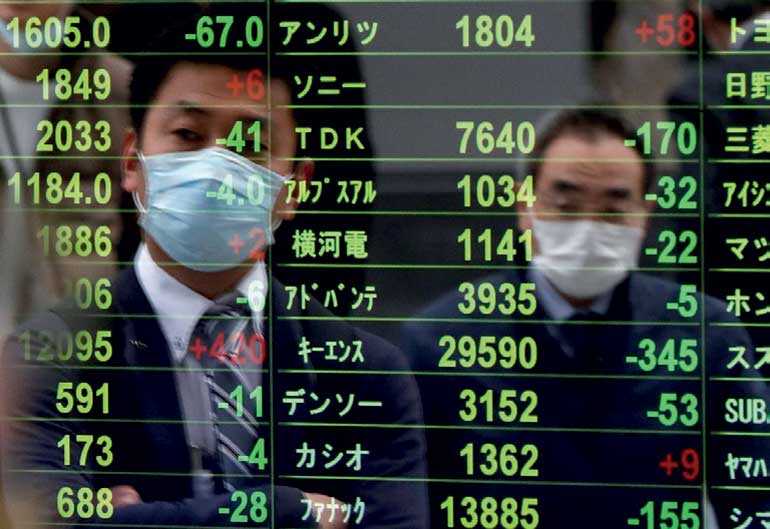Friday Jan 10, 2025
Friday Jan 10, 2025
Tuesday, 31 March 2020 00:53 - - {{hitsCtrl.values.hits}}

Sydney/Hong Kong (Reuters):Asian shares slid on Monday as fears mounted that the global coronavirus shutdown could last for months although markets regained some lost ground late in the session with Australia posting a standout jump.
US and European futures also turned upwards in the Asian afternoon, with E-Mini futures for the S&P 500 up 1.1%, again after earlier losses, EUROSTOXXX 50 futures rallying 2% and FTSE futures 1.5%.
Australia’s benchmark ASX200 saw a late surge, closing up 7% after Prime Minister Scott Morrison unveiled a $130 billion ($79.86 billion) package to help save jobs.
Most other markets were down but trimmed earlier losses. Japan’s Nikkei dropped 1.57%, Shanghai blue chips were down 0.94%, and there were sharper drops in Southeast Asia, with Singapore’ benchmark index down 2.95%.
That left MSCI’s broadest index of Asia-Pacific shares outside Japan nearly flat.
“Markets in Asia are reacting to concerns about the knock-on economic impact of the coronavirus situation in Europe and North America, rather than Asian case numbers,” said Suresh Tantia senior investment strategist at Credit Suisse.
JPMorgan now predicts that global GDP could contract at a 10.5% annualised rate in the first half of the year.
“We continue to mark down 1H20 global GDP forecasts as our assessment of both the global pandemic’s reach and the damage related to necessary containment policies has increased,” said JPMorgan economist Bruce Kasman.
As a result, central banks have mounted an all-out effort to bolster activity with rate cuts and massive asset-buying campaigns, which have at least eased liquidity strains in markets.
China on Monday became the latest to add stimulus with a cut of 20 basis points in a key repo rate, the largest in nearly five years.
Singapore also eased as the city-state’s bellwether economy braced for a deep recession, while New Zealand’s central bank said it would take corporate debt as collateral for loans.
Rodrigo Catril, a senior FX strategist at NAB, said the main question for markets was whether all the stimulus would be enough to help the global economy withstand the shock.
“To answer this question, one needs to know the magnitude of the containment measures and for how long they will be implemented,” he added. “This is the big unknown and it suggests markets are likely to remain volatile until this uncertainty is resolved.” Bond investors looked to be bracing for a long haul with yields at the very short end of the Treasury curve turning negative and those on 10-year notes dropping a steep 26 basis points last week to last stand at 0.68%.
That drop has combined with efforts by the Federal Reserve to pump more US dollars into markets, and dragged the currency off recent highs.
Against the yen, the dollar was pinned at 107.74, well off the recent high of 111.71. The euro edged back to $1.083, after rallying more than 4% last week.
“Ultimately, we expect the USD will soon reassert itself as one of the strongest currencies,” argued analysts at CBA, noting the dollar’s role as the world’s reserve currency made it a countercyclical hedge for investors.
“This means the dollar can rise because of the deteriorating global economic outlook, irrespective of the high likelihood the US is also in recession.”
The dollar’s retreat had provided a fillip for gold, but fresh selling emerged on Monday as investors were forced to liquidate profitable positions to cover losses elsewhere. The metal was last off 0.23% at $1,613.6 an ounce.